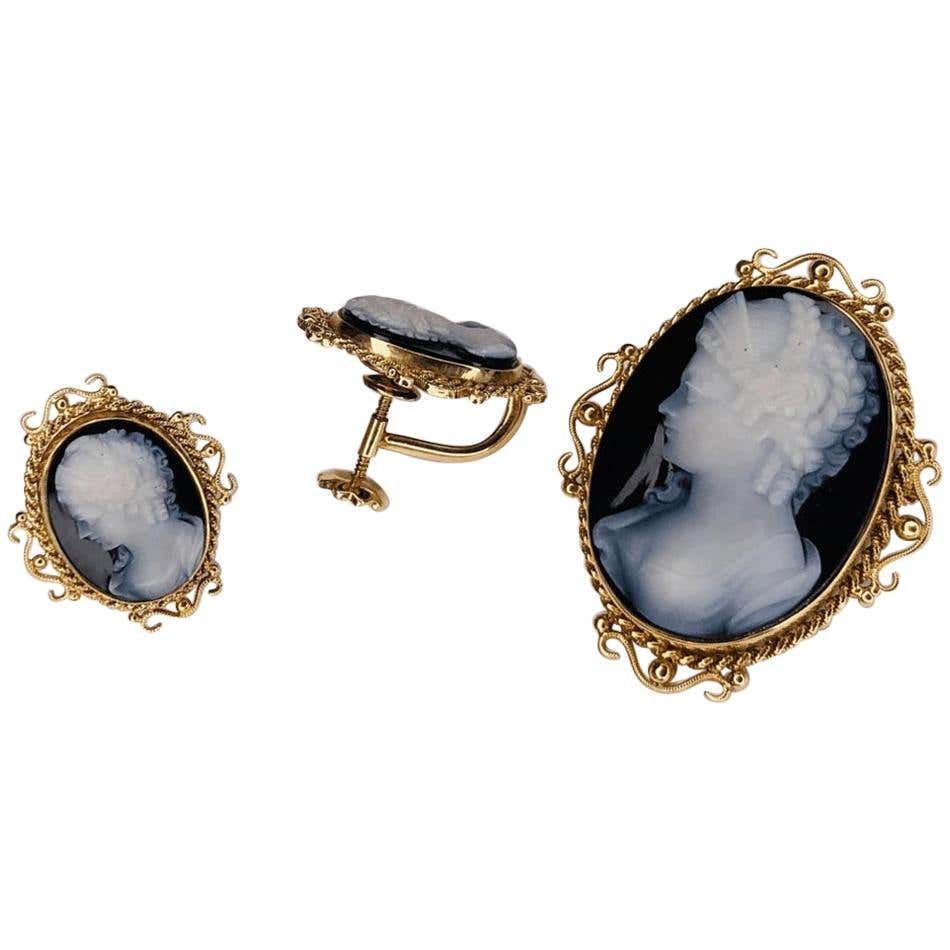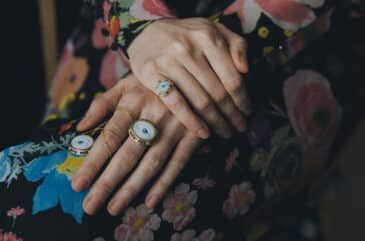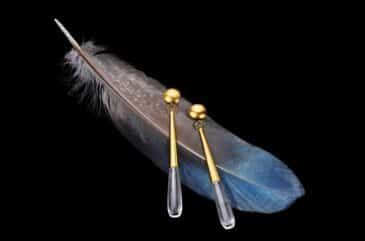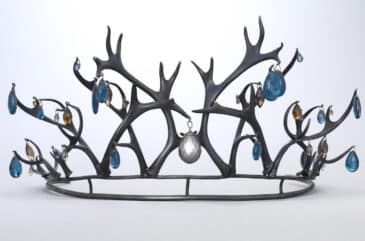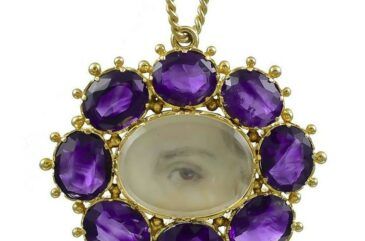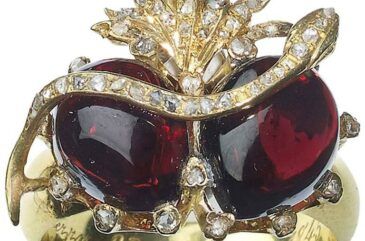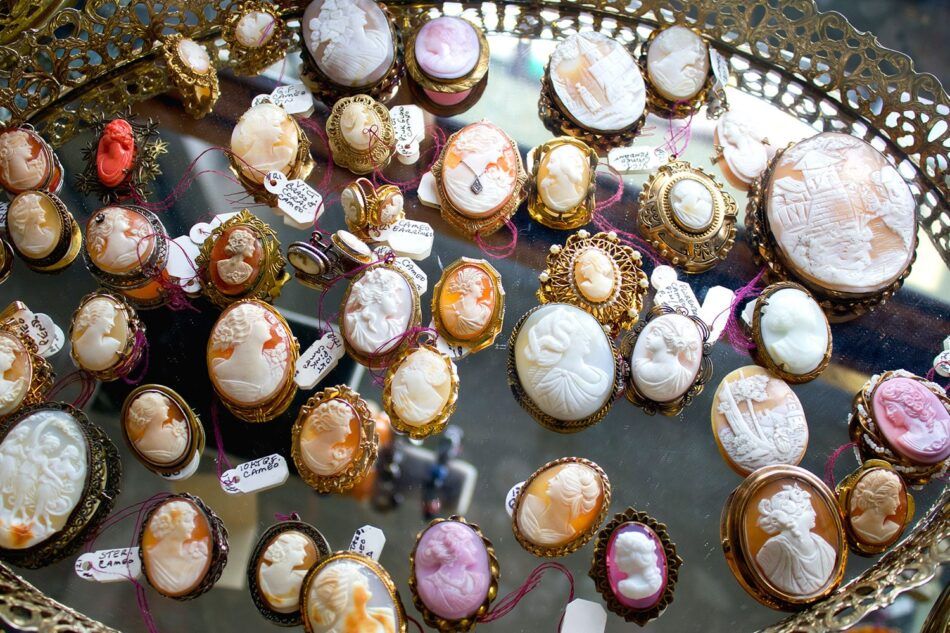
Until celebrities like Rihanna and Sarah Jessica Parker started flaunting them, cameo jewelry was considered passé. Cameos were often associated with the brooches of yesteryear worn by maiden aunts, heirlooms from sentimental Victorians who had profiles of loved ones carved into agate, coral, lava stone and shell.
Regardless of how cameos came to experience a resurgence, their historical significance and sheer beauty have made them prized possessions among jewelry collectors. Here, we explore the history of cameos, the ways to identify authentic ones and what makes these carved gems both trendy and timeless.
What Is a Cameo?
Cameos are gemstones, shells or other natural or manmade materials carved in relief to depict landscapes, mythological figures or, most notably, women’s portraits in profile. They are typically mounted in gold or silver and set in necklaces, bracelets, pendants and rings.
A Brief History of Cameo Jewelry
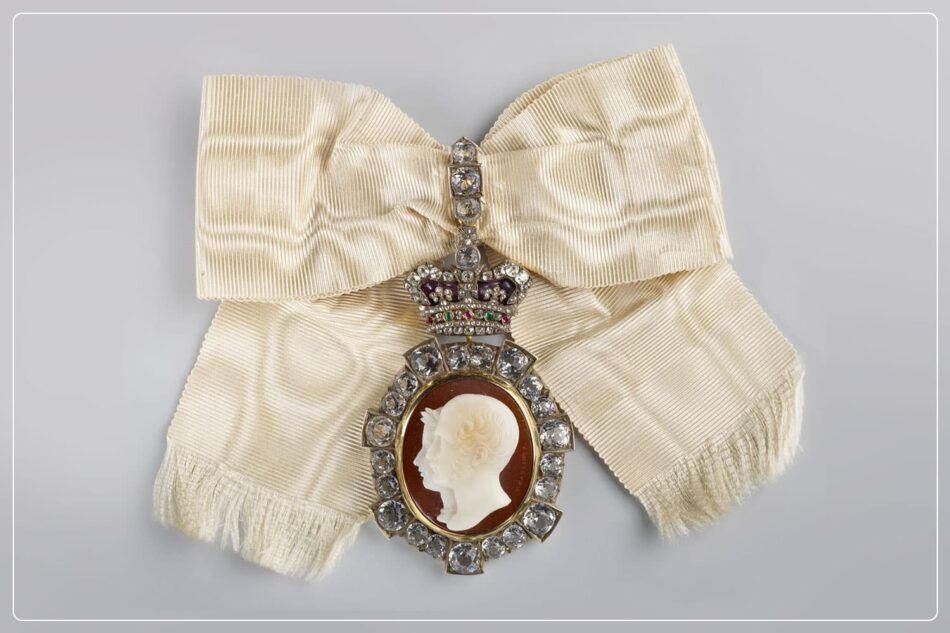
Cameo jewelry has a storied history that spans centuries, with each era leaving a unique imprint on the art form.
Ancient Roots
Cameos are part of a stone-carving tradition that goes back to prehistoric petroglyphs, which are thought to have had spiritual significance. During the Roman Empire, artisans carved mythological symbols and, later, political portraits into gemstones and glass — the latter marketed to lower social classes.
The Renaissance
The Renaissance and Elizabethan periods saw an efflorescence of sophisticated cameos. Noblewomen adorned themselves with the carved gems to announce their social status and wealth. Pope Paul II wore so many cameo rings that some historians believe his perpetually cold hands contributed to his death.
The 19th Century
Cameo jewelry became all the rage in the 1800s. Napoleon Bonaparte and Queen Victoria were both avid cameo collectors. In fact, the latter is credited with popularizing cameos made from shells, which are softer than gemstones and much faster for artisans to carve, making them more affordable. During the 19th century, cameos made of hardened lava were sold as souvenirs to tourists visiting the recently uncovered ruins of Pompeii.
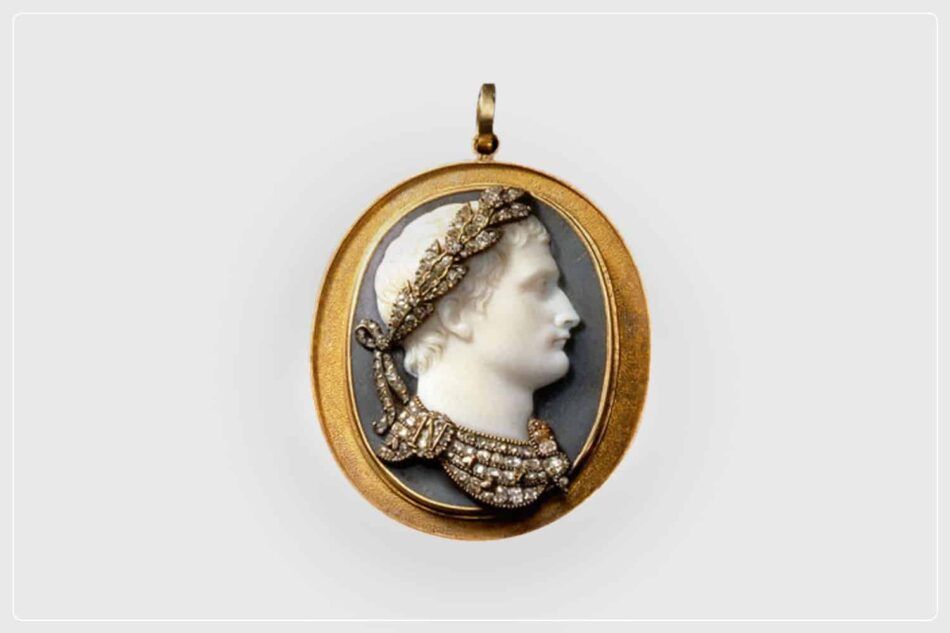
Napoleon’s Influence
Napoleon, an unexpected fashion icon, recognized the brilliance of Greco-Roman cameo craftsmanship and saw how cameos might serve as emblems of France’s new republic, linking it to Roman grandeur. For his coronation as emperor, he ordered gold crowns set with cameos for himself and Josephine and commissioned furniture embellished with the gems.
To exploit what became a continental craze, Napoleon established a cameo school in Paris. French craftsmen rivaled their Italian counterparts, producing spectacular cameos and cameo jewelry throughout the remainder of the 19th century.
20th Century
The 20th century witnessed a surge in affordable cameos, riding the wave of interest in costume jewelry. The carved gem’s rich history and fine craftsmanship contributed to the popularity of both vintage and antique cameo jewelry.
Accessibly priced replicas of antique cameo jewelry made from seashells, glass and plastic broadened the genre’s appeal.
What Determines the Value of a Cameo Jewel?
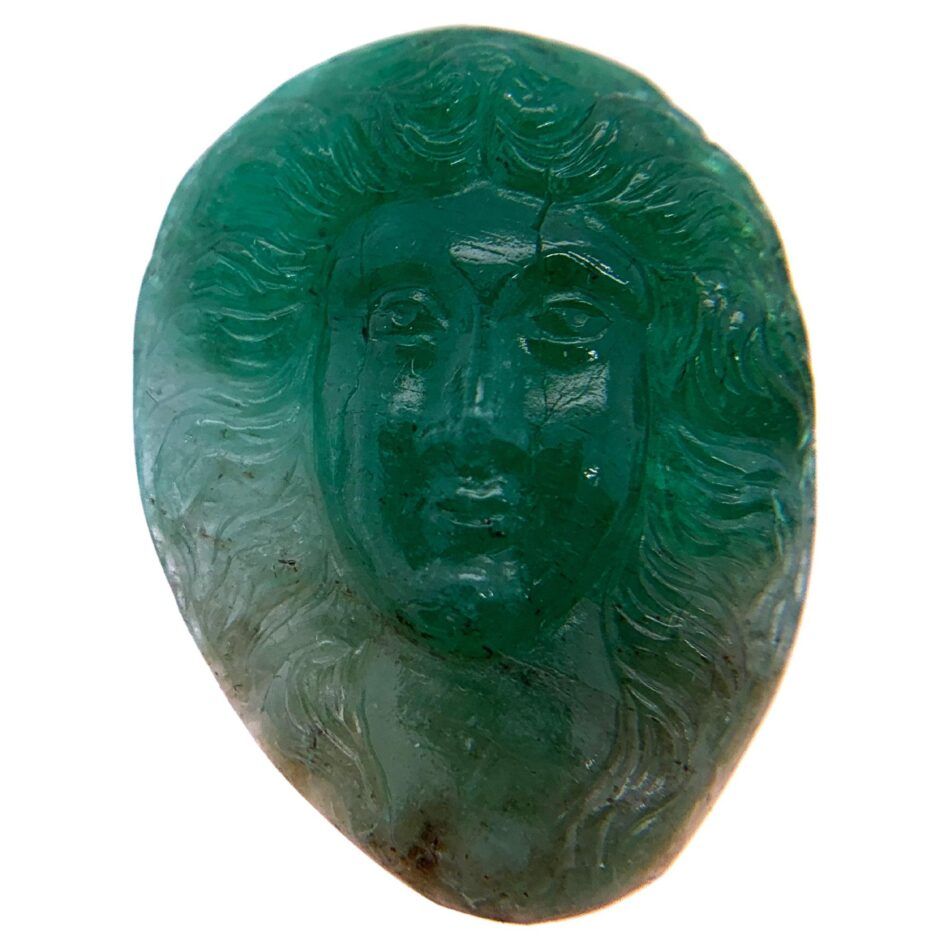
While fine one-of-a-kind cameo jewelry can cost upwards of $10,000, mass-produced pieces can be quite inexpensive.
The value of cameo jewels varies widely, depending on a combination of factors, including the type and quality of the material, the setting, the intricacy of the carving and the historical and artistic significance.
Material
Cameos made from gemstones like opals or emeralds are likely to fetch higher prices than those made from seashells or volcanic rock. Harder materials, like agate, may cost more because of the difficulty of carving finer details into them.
Shell cameos, which became popular during the Victorian era, are cherished for their beauty. Because shells are easier to source — and carve — shell cameos are often less expensive than those made from gemstones.
Take a close look before you buy one, however, since they are prone to hairline cracks caused by dehydration.
Setting
A gold or platinum frame or setting significantly increases the cost of a cameo, especially if it is original to the piece. A remounted cameo may still be a fine jewel, but it will be less valuable than one in its original setting.
Intricacy of Carving
A high level of detail, including delicate features, layers and fine nuances, as well as images that include multiple motifs, can make a cameo particularly valuable.
Historical and Artistic Significance
Antique cameos connected with historical figures, movements or events — along with ones depicting unusual subjects or made by famous artists — may be particularly prized.
How Can I Identify Genuine Antique or Artisan-Made Cameo Jewelry?
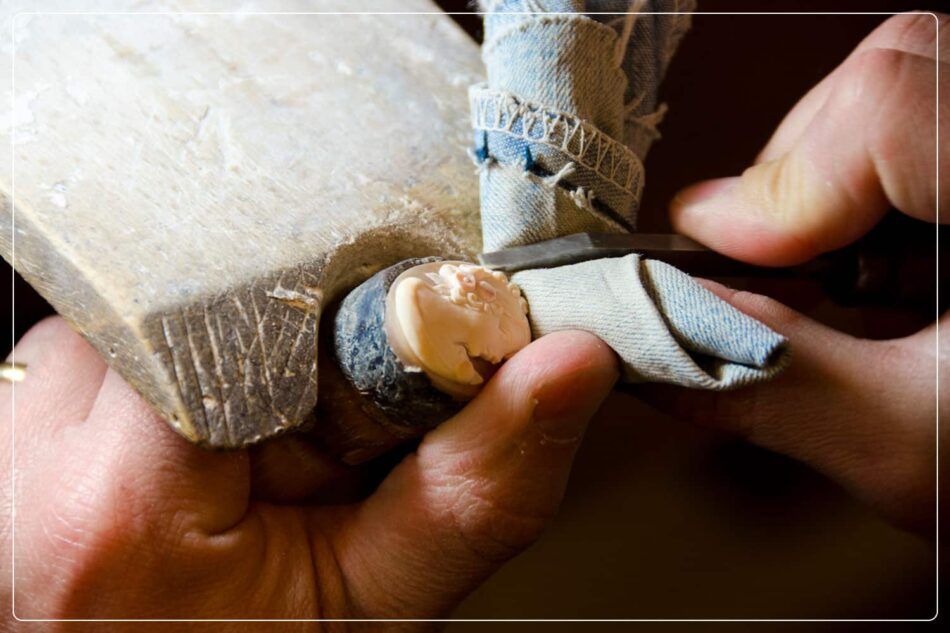
Because cameos made from cheap materials are sometimes offered as authentic antique or artisanal examples, it’s important to perform a careful assessment of any piece you’re considering.
Determine the Cameo Material
One of the quickest ways to tell if your cameo is the real thing is to examine what it’s made of. Authentic cameos are crafted from natural materials, such as ivory, shell, coral, lava stone and gemstones like onyx, sardonyx and agate.
Fake cameos are generally mass-produced using man-made substances like plastic, resin or glass.
Evaluate the Transparency
Hold the cameo up to a light. If you can see through it and have a good view of the outline of the design, it’s likely made from shell or a gemstone. Plastic versions aren’t as transparent.
Look for Cracks or Crazing
While you’re holding your cameo to the light to test for transparency, check for cracks and chips. These are more important for assessing condition (and therefore value) than authenticity. Soft plastic is more easily chipped than stone, but as noted above, shell is liable to crack if it becomes dry.
Crazing — the formation of hairline fractures — is common in antique cameos but doesn’t generally impact the beauty or value of a piece.
Other markings, such as small indentations and nicks from carving tools, likely mean your piece is an authentic antique made from natural materials.
Zoom in on the Carving
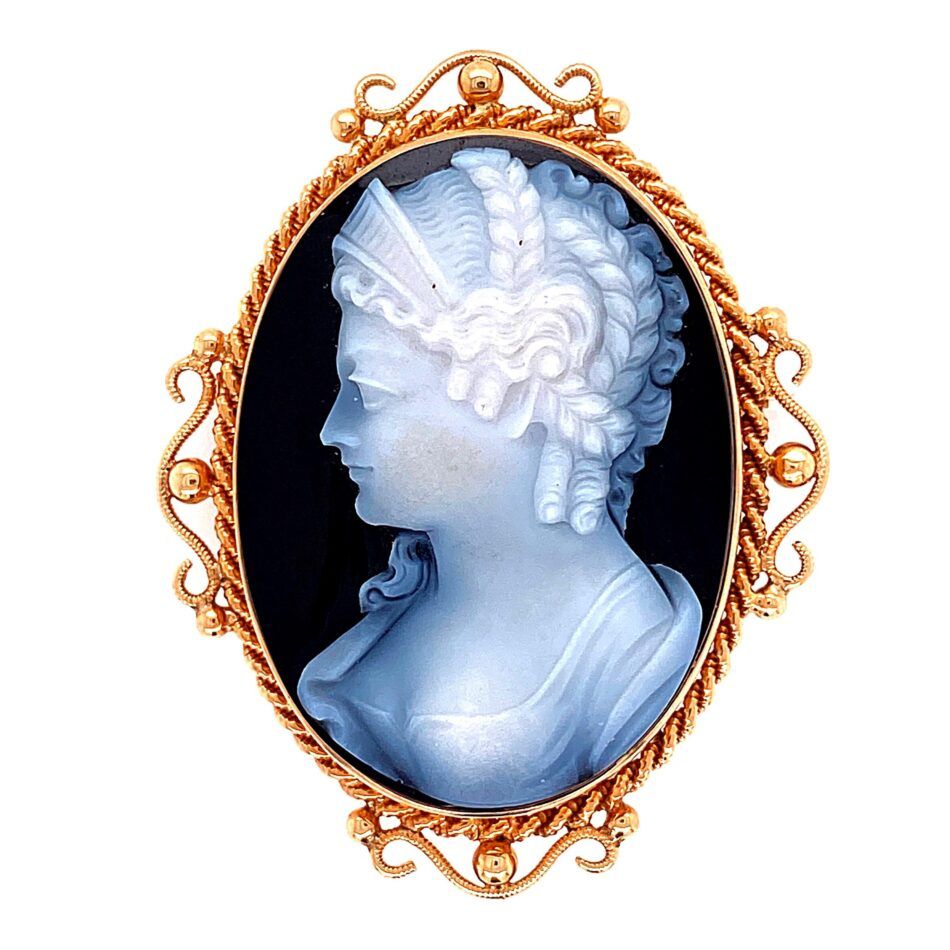
You can tell much about the genuineness of a cameo by looking closely at the carvings. Check things like:
- Smoothness: Mass-produced plastic cameos are very smooth.
- Sound: Tap your cameo against a hard surface. If it sounds hollow, it’s likely made from plastic. If it sounds solid, it’s likely made from natural materials.
- Execution: Skilled cameo carvers took pride in their craft and paid close attention to fine details, like the texture of hair and the intricate folds of a flower.
With a portrait cameo, examine the face closely. In antique pieces, the subjects generally look to the right and tend to be distinctive in appearance. The subjects depicted in inexpensive mass-produced versions, in contrast, often have the same or very similar faces.
It’s helpful to do a Google search for “plastic cameo” to get a feel for the facial styles that have been manufactured en masse.
Examine the Setting
Antique cameos made between the 18th and mid-19th centuries were mounted in an alloy of copper and zinc resembling gold that is known as pinchbeck; gold electroplating was used from the 1840s on. Cameo settings of the Victorian era are generally simpler than the later pearl– and diamond-encrusted ones.
As always, if you’re unsure whether a cameo (or any other piece of jewelry) is an authentic antique — or made from fine materials — consult a reputable antiques or jewelry dealer to inspect it.
Contemporary Cameo Jewelry Trends
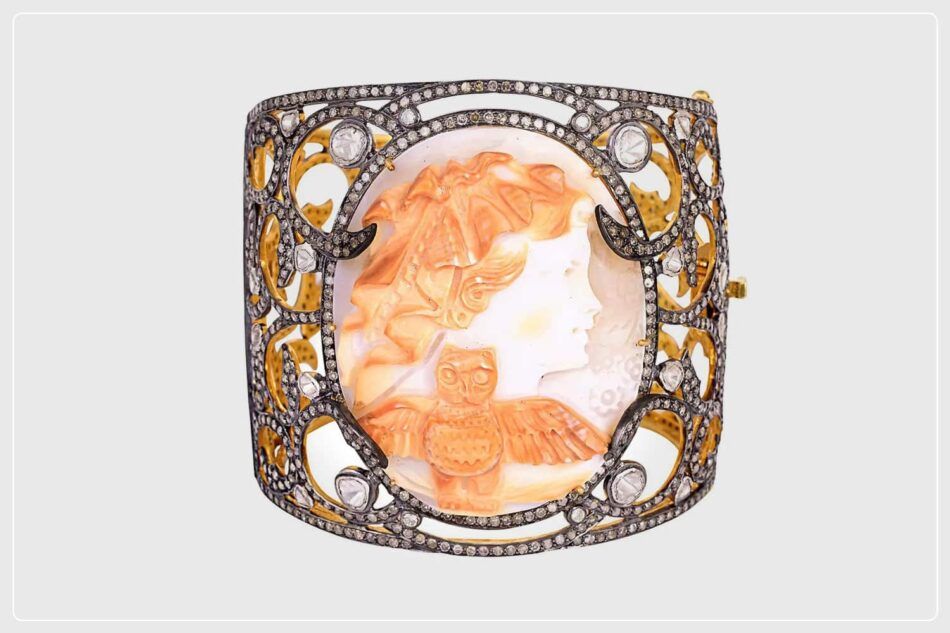
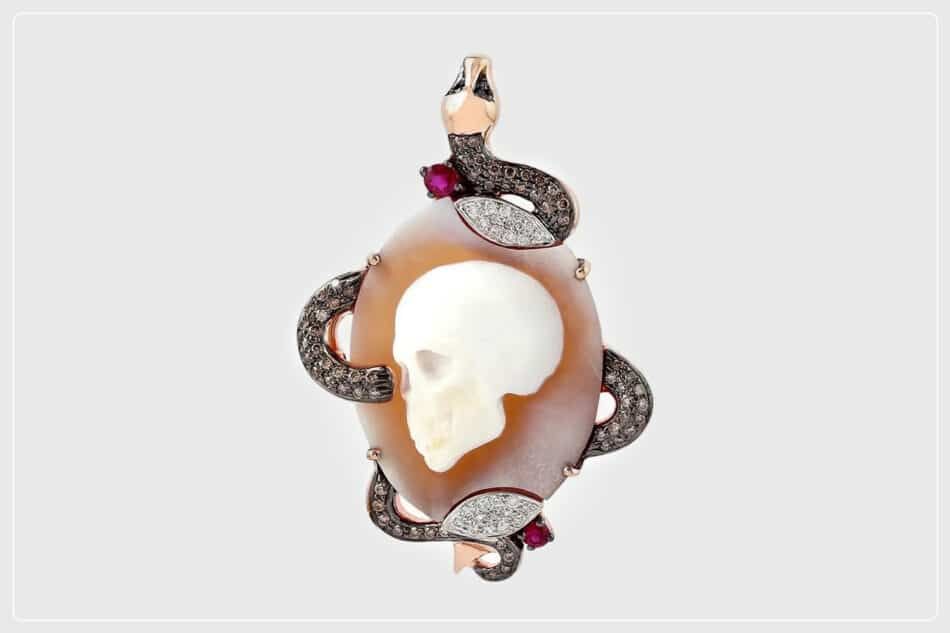
While cameo jewelry has never fallen out of favor, exactly, it has enjoyed a resurgence in popularity in recent years. In 2019, Cate Blanchett created a stir on the red carpet when she appeared wearing a pair of hand-carved cameo earrings created by Liz Swig that were based on a self-portrait by American artist Cindy Sherman.
Jewelry artist Amedeo Scognamiglio creates hand-carved cameos depicting unlikely figures, like a sardonyx-shell skeleton holding a smartphone and a black Belgian marble puma, both set in precious metals.
Chicago-based fine jewelry designer Meghna Patel carves cameos from materials like enamel and moonstone, setting them in diamond-encrusted 18K gold. And fashion designer Dolce & Gabbana has included modern cameo jewelry in its recent collections.
